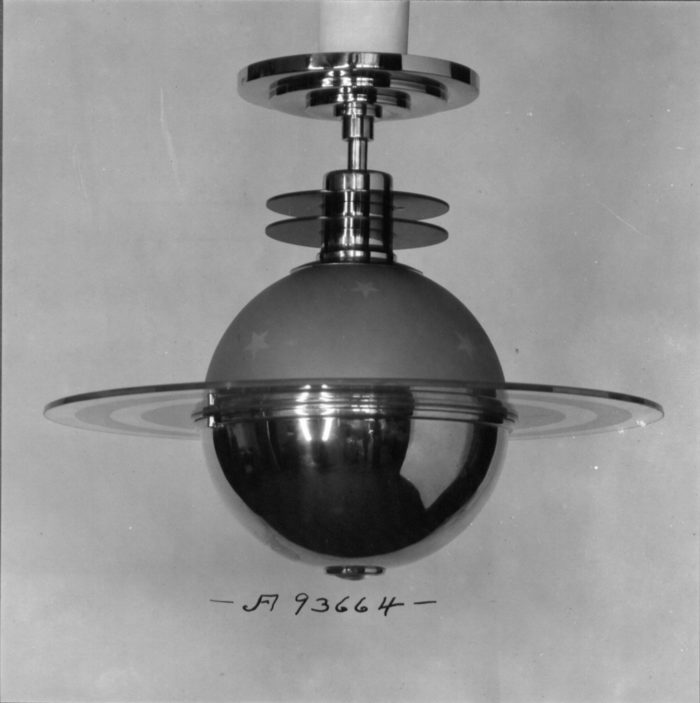Objects from the Smithsonian Design Library’s Edward F. Caldwell Collection can been seen in the exhibition The Jazz Age: American Style in the 1920s, now on view through August 20, 2017.
This photograph of a Rockefeller Center pendant light is one of almost 50,000 photographs and drawings in the Smithsonian Design Library’s Edward F. Caldwell Collection. Caldwell and Company was a premier designer and manufacturer of custom lighting fixtures and fine metalwork from the late nineteenth to the mid-twentieth centuries. This immense visual resource is one of the largest such archives of a single American lighting company.
The firm was founded in 1895 in New York City by Edward F. Caldwell and his partner Victor F. von Lossberg, who had met while working at the lighting firm Archer and Pancoast. Caldwell had achieved great success at Archer and Pancoast working on commissions for the architectural firm McKim, Mead and White that included the New York State Building at the 1893 World’s Columbian Exposition. He developed a lasting relationship with Stanford White resulting in Caldwell and Company securing numerous commissions, most notably the White House renovation in 1902. Many of their magnificent chandeliers, wall sconces, and torchieres continue to be prominent features throughout the White House including the East Room ballroom and State Dining Room. Their work still graces many of New York City’s best known public and private buildings, as well as others throughout the country and beyond. Working with many of the most renowned architects of their day including Warren and Wetmore; Carrere and Hastings; and Cass Gilbert, they designed fixtures for most of the grand Beaux-Arts mansions, including the homes of Henry Clay Frick, John Jacob Astor, J. Pierpont Morgan, Frederick W. Vanderbilt, and Andrew Carnegie. Public building commissions included Grand Central Terminal, the New York Public Library, and the magnificent art deco chandeliers and wall sconces for Radio City Music Hall. Visitors to Cooper Hewitt will see a series of bronze and alabaster ceiling fixtures in the Great Hall that leads to a massive chandelier illuminating the grand staircase—these are all original 1901 Caldwell designs for Andrew Carnegie’s mansion.
The craftsmanship of Caldwell and Company also transferred to modernism, as seen in this cosmic ceiling fixture (Fig. 1) the firm designed in 1932 for the art deco icon, Rockefeller Center. Built from 1930 to 1939 by a team of top architects led by Raymond Hood, Rockefeller Center consisted of fourteen buildings within three city blocks, making a mini city within a city of skyscrapers a reality for the first time. This commission was one of the largest and most prestigious a lighting manufacturer could achieve, and Caldwell was the obvious choice for the job. Each piece was custom designed and manufactured in their foundry at 36–40 West 15th Street, where they employed over a thousand people during the height of their operations. At a time when American manufacturing was at its peak, Caldwell and Company were masters at pairing design and craftsmanship with new electrical technologies, establishing a golden age of art lighting. The Edward F. Caldwell Collection, part of the Smithsonian Design Library archive and available online, is a valuable resource for historic preservationists, architectural scholars, lighting designers, and collectors. Because these fixtures are often found unmarked, disassembled, incomplete, or separated from their original locations, this archive is often the only source for identifying a Caldwell fixture in its original state. Browsing the archive also reveals the wide variety of tastes and styles that were rapidly developing and changing during an incredible time of growth in America.
This essay is excerpted from the book Making Design, available through SHOP Cooper Hewitt.
